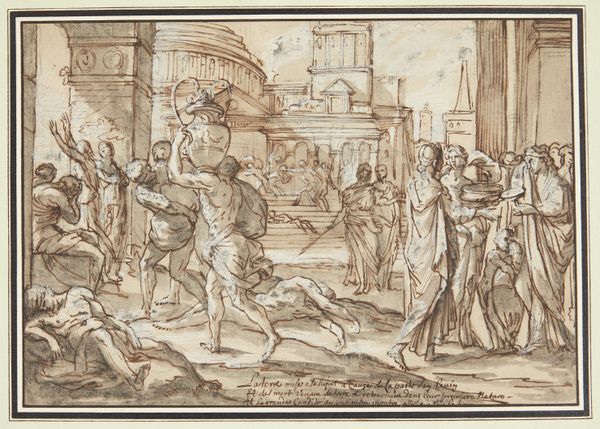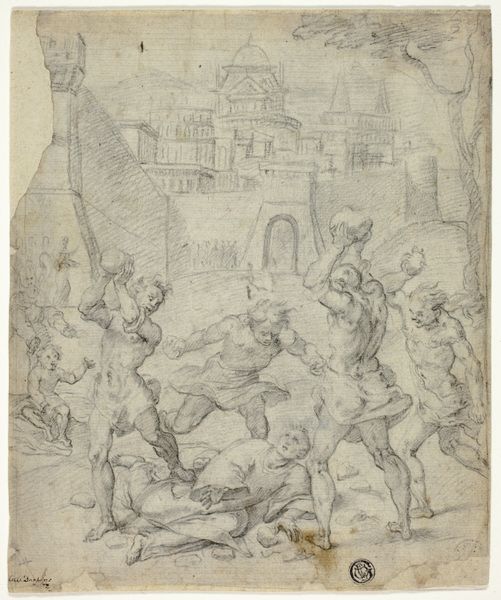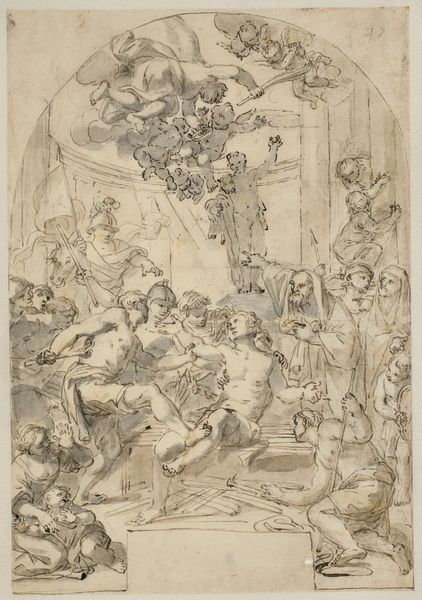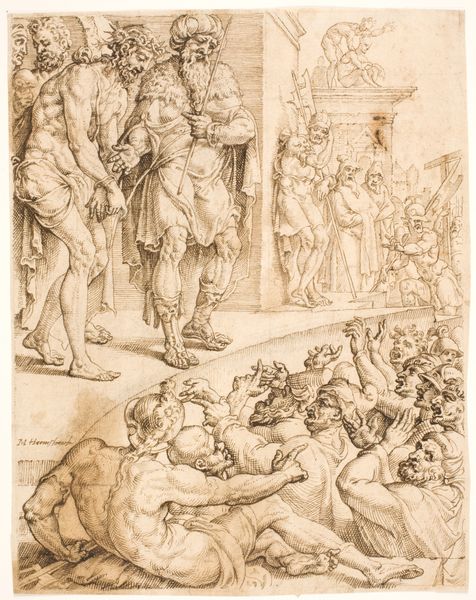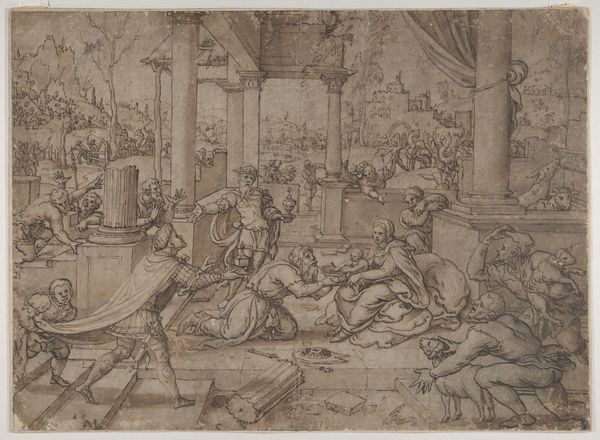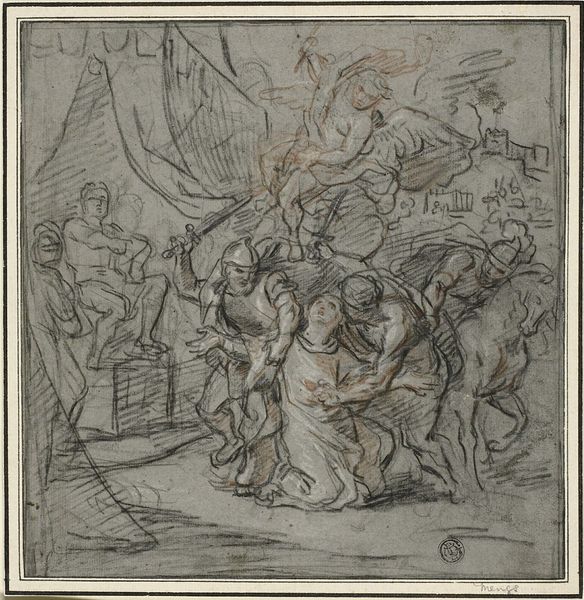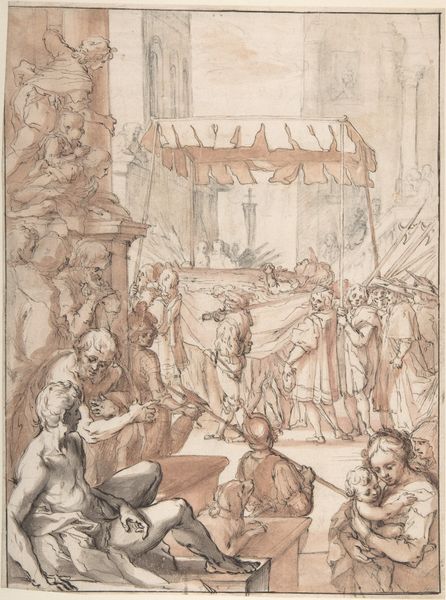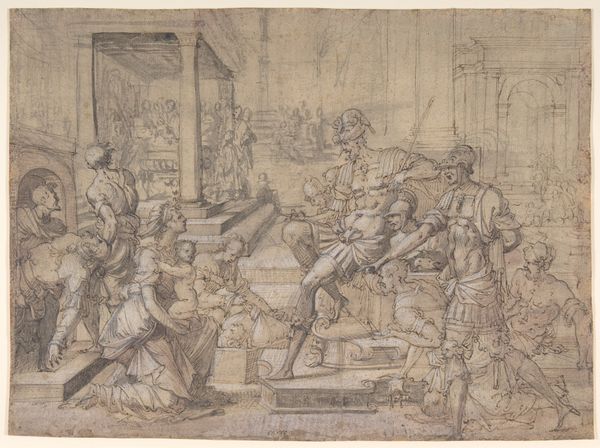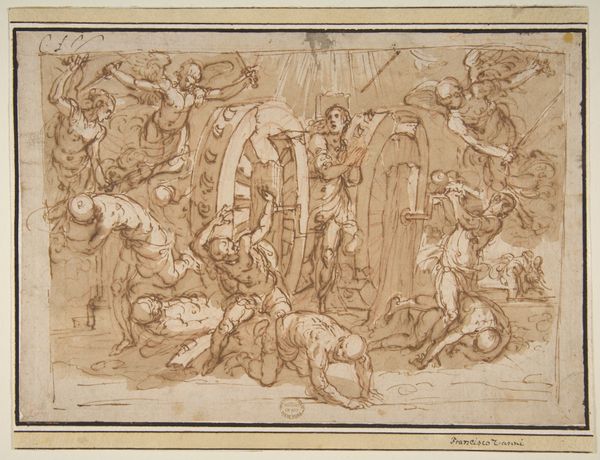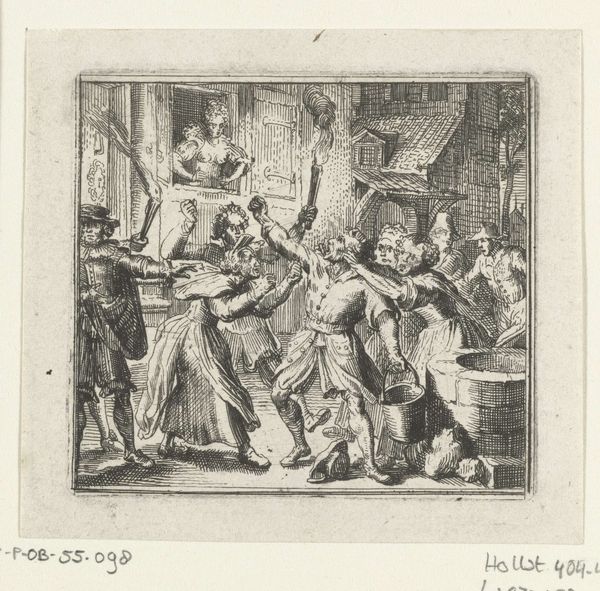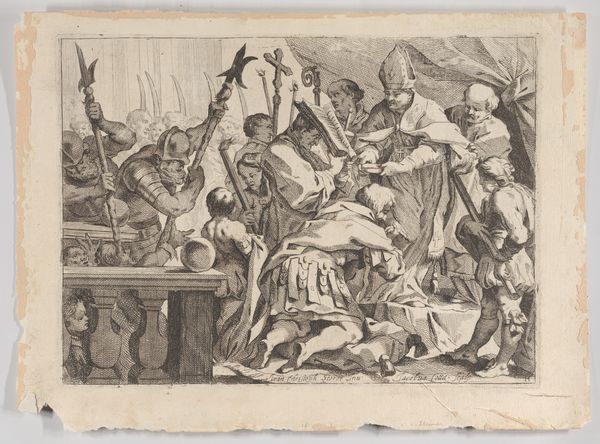
drawing, print, paper, ink
#
drawing
#
ink drawing
#
narrative-art
#
baroque
# print
#
figuration
#
paper
#
ink
#
genre-painting
Dimensions: 11 7/16 x 11 7/16in. (29.1 x 29.1cm)
Copyright: Public Domain
Curator: Look at the stark quality of the lines! This drawing, "The Mock Visit of Ceremony," thought to have been executed sometime between 1659 and 1742, is attributed to Faustino Bocchi. Notice how the artist uses ink on paper to capture a flurry of action. Editor: My initial reaction is chaos, but in a controlled, almost theatrical way. The monochromatic palette focuses our attention, lending it a stark yet playful air. It's like looking into a puppet show from another era. Curator: Exactly. Bocchi’s mastery over line and wash allows him to craft a composition dense with character and activity. The creation process must have involved fine, delicate brushes. What draws my interest, though, is the social critique possibly embedded within such works produced at the time. Editor: Agreed. The formal organization presents the subject, a supposed “visit,” more like a raucous disturbance. There's a distinct foreground, middle ground, and background. What strikes me is the formal balance amid all that movement. The grouping of figures creates depth, guiding your eye through this unusual social commentary. Curator: Precisely! The scene reads to me as a snapshot of social hierarchy subverted through the act of making. I think about the workshops, and how the very availability and distribution of paper could offer a space for transgression and observation of societal norms. Editor: Yes, but it's the clever manipulation of shape, and the careful use of line weight that guide my eye. Take the central figures: they command attention, due to their height and centrality, acting as almost theatrical performers. I can observe a mastery of technique that lends energy to the composition. Curator: I am taken by Bocchi's ability to weave narratives about labor and societal structures in his time. What were the social circumstances around this artist? Who would have bought the prints? Were there particular class or social dynamics he engaged? That's the realm I’m interested in. Editor: Both our interpretations enrich our perception. His drawing offers a deep insight into the early modern relationship between form, narrative and the human condition. Curator: Ultimately, seeing through the lens of production brings the realities of labor and material accessibility into the conversation surrounding this artist and artwork. Editor: And by exploring these intricacies and subtleties, our appreciation and understanding for Bocchi's work and its time only deepens.
Comments
No comments
Be the first to comment and join the conversation on the ultimate creative platform.
